Over the Years
Home > Over the Years > Over the Fiscal Years (2010 APR - 2020 MAR) > Four Doctors from Sri Lanka, Finland, Brazil and USA Invited for Training
Four Doctors from Sri Lanka, Finland, Brazil and USA Invited for Training
HICARE received four doctors from Sri Lanka, Finland, Brazil and US, for the training on diagnosis of radiation disorders.
Names and Titles of Trainees:
1.Aruna Pallewatte
National Hospital of Sri Lanka (Sri Lanka)
Consultant Radiologist
*Introduced by the International Atomic Energy Agency (IAEA)
2.Raija Seuri
Helsinki University Hospital for Children and Adolescents (Finland)
Pediatric Radiologist
*Introduced by the International Atomic Energy Agency (IAEA)
3.Eduardo Massad
The University of Sao Paulo, School of Medicine (Brazil)
Full Professor of Medical Informatics
4.Iraji Khalkhali
Los Angeles Country-Harbor UCLA Medical Center (USA)
Professor of Radiological Sciences, Director, Breast Diagnostic Center
Period of Training:
January 21 to 25, 2013
January 21 to 28, 2013 – Dr. Massad only
Training Organizations (in order of visits):
Radiation Effects Research Foundation
Hiroshima University Hospital (Advanced Emergency and Critical Care Center)
Hiroshima University Hospital (Department of Radiation Oncology)
Hiroshima Atomic Bomb Casualty Council
Hiroshima Red Cross Hospital & Atomic-bomb Survivors Hospital
Kurakake Nozomi-en (A-bomb survivors nursing home)
Hiroshima University Research Institute for Radiation Biology and Medicine - Dr. Massad only
Hiroshima Peace Memorial Museum and others
Training Course:
Diagnosis of radiation disorders

With Dr. Kazunori Kodama, Chief Scientist of Radiation Effects Research Foundation (far left)

With Professor Koichi Tanigawa, Director of Advanced Emergency and Critical Care Center, Hiroshima University Hospital (far left)
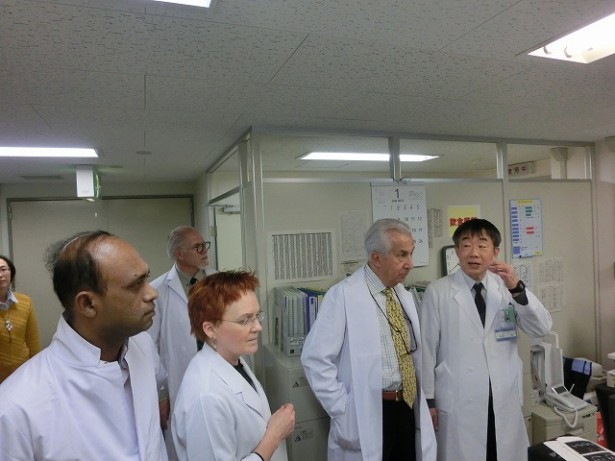
With Professor Yasushi Nagata, Department of Radiation Oncology, Hiroshima University Hospital (far right)
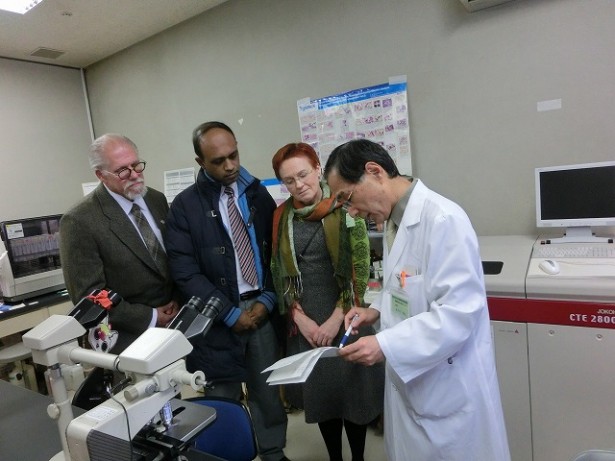
With Dr. Hideo Sasaki, Director of Health Management & Promotion Center, Hiroshima Atomic Bomb Casualty Council (far right)
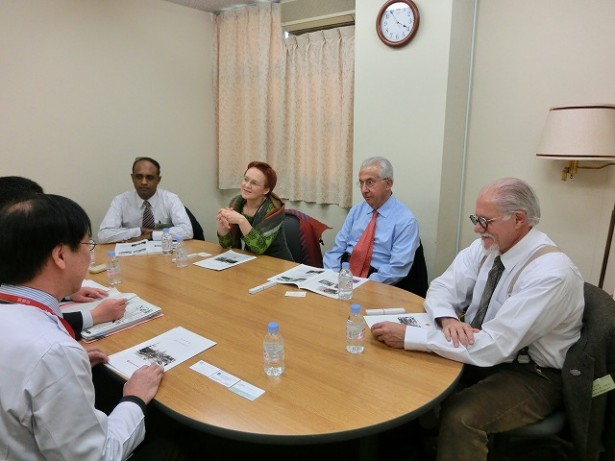
In the lecture of Dr. Kenichi Arita, Director of Department of Respiratory Disease of Hiroshima Red Cross Hospital & Atomic-bomb Survivors Hospital
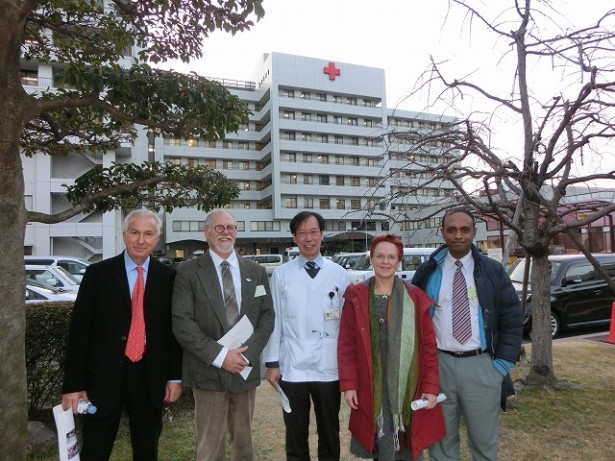
With Dr. Kenichi Arita (center)
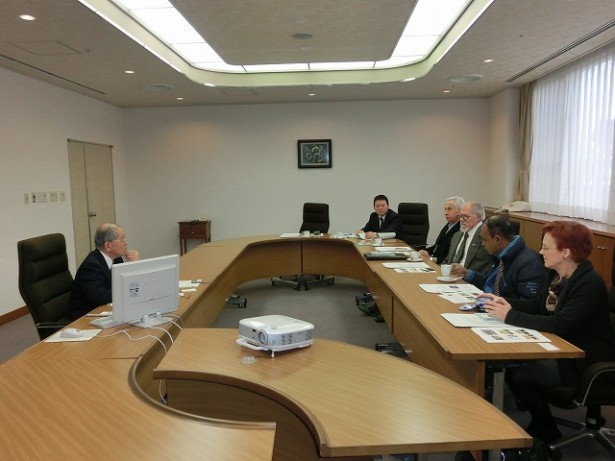
With Dr. Nanao Kamada, Board Chairman of Hiroshima A-Bomb Survivors Relief Foundation (far left)

Dr. Pallewatte (left) receiving a certificate of completion from Dr. Nakao Kamada
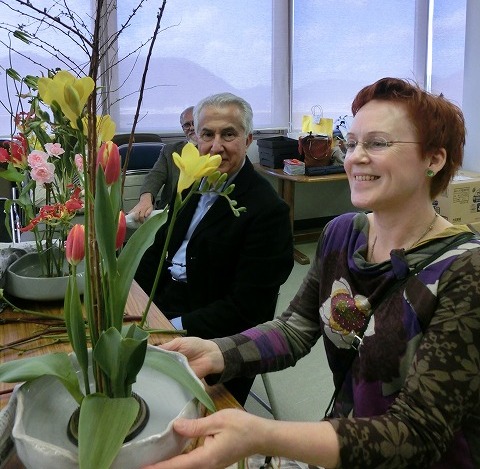
Dr. Khalkhali (left) and Dr. Seuri (right) enjoying flower arrangement at Kurakake Nozomi-en
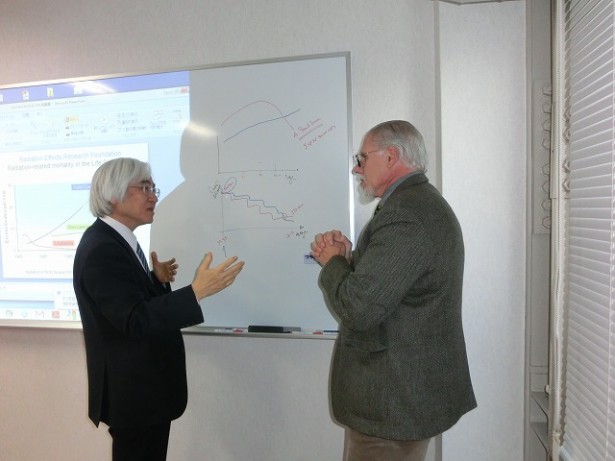
Dr. Massad (right) discussing with Dr. Kenji Kamiya, Director of Hiroshima University Research Institute for Radiation Biology and Medicine
Feedback:
◆The HICARE program gave me the opportunity to learn and observe the nature of injuries suffered by A-bomb survivors and therefrom the possible effects of radiation on humans. I also learnt how to arrange/organize follow up programs and reflected research and medical management of radiation injuries especially after nuclear/radiation disasters.
I will apply the research techniques I learned to my current research articles (i.e. better data collection, data analysis and statistical records). I also obtained a clear idea of non malignant and malignant conditions that can occur following unintended radiation exposure and will be able to detect lesions more effectively in future. I will pass this newly gained knowledge to my colleagues back home and make them more efficient and accurate in diagnosis follow up in radiation injuries and research.
◆I’ve learned a lot and I am coming back with many ideas of projects on the subject.
I intend to carry out a research project to assess and compare the health of A-bomb survivors living in Brazil.
I think Hiroshima is a wonderful city which has been able to overcome the horrors of its tragic history.
◆I learned a lot from all the lectures. I intend to give several lectures to doctors, medical students and nurses. It would have been much better if I could have obtained slides of all lectures so that we could use them to talk to others and teach them. HICARE training was one of the most positive programs and experiences that I have ever had.
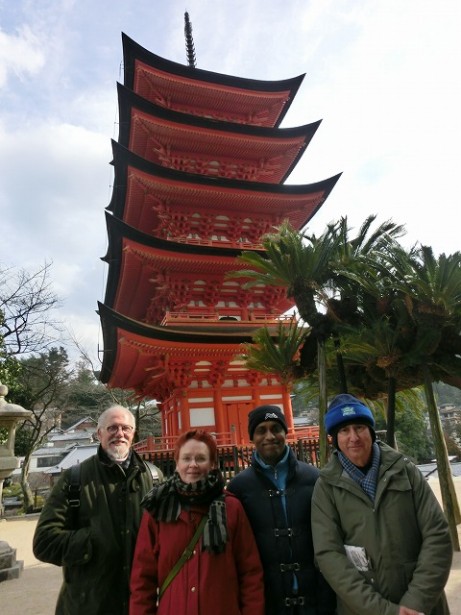
From left: Dr. Massad, Dr. Seuri, Dr. Pallewatte, and Dr. Khalkhali




